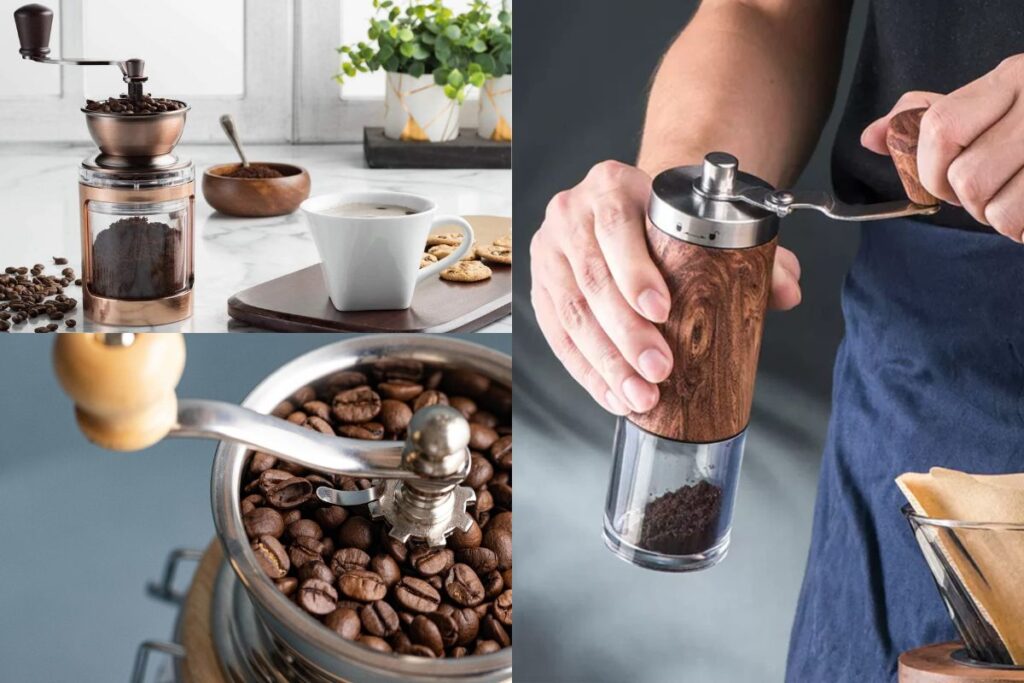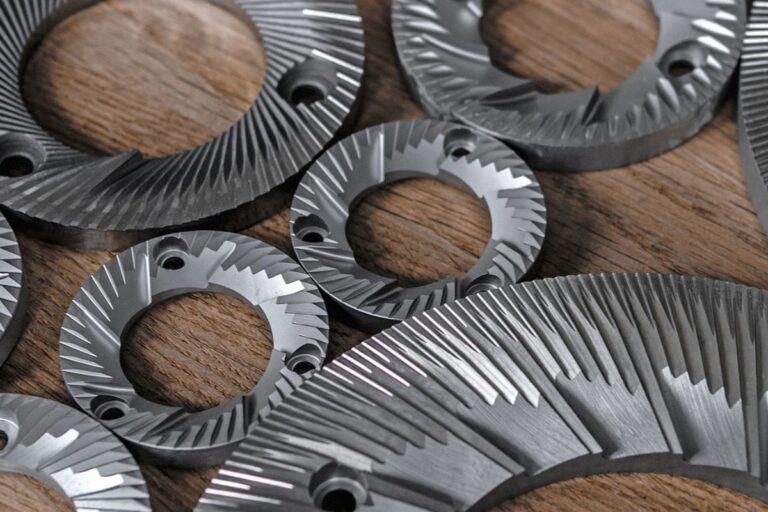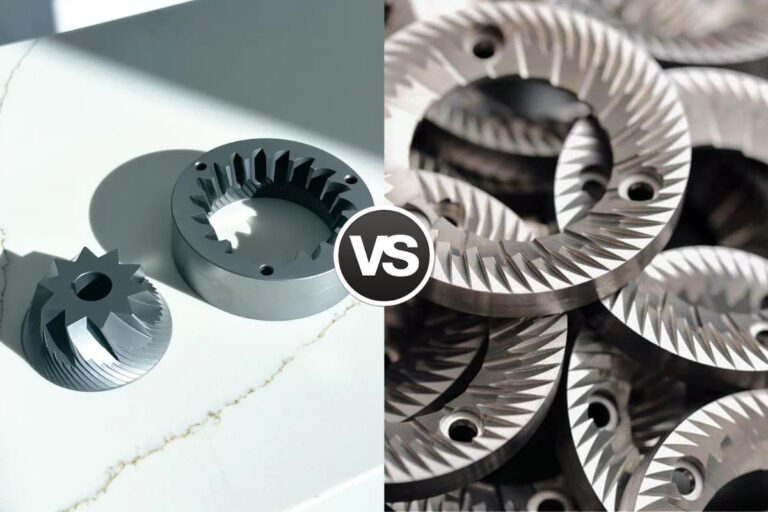If you’re passionate about coffee and its preparation, you’ve likely heard about manual coffee grinders. For coffee lovers who appreciate hands-on involvement in every step of the brewing process, manual grinders provide an unmatched experience. Not only do they allow you to have full control over the grind size, but they also deliver the satisfaction of crafting something special. But what exactly is a manual coffee grinder, and how does it work? In this blog post, we’ll cover everything you need to know, from its purpose and types to how it compares to electric grinders.
The Basics of a Manual Coffee Grinder
A manual coffee grinder is a small, portable device designed to grind coffee beans by hand. Unlike electric grinders, which rely on a motor to turn the burrs or blades, manual grinders operate with a hand crank that powers the grinding mechanism. These grinders are often compact, easy to store, and perfect for those who enjoy grinding their coffee beans fresh before brewing.
Manual grinders typically consist of several key parts:
- Hopper: This is where you place your coffee beans.
- Burrs: These are the grinding surfaces, which can be made of ceramic or stainless steel. Burrs are responsible for crushing the beans into a consistent grind.
- Grind Adjustment Knob: This allows you to adjust the coarseness or fineness of the grind.
- Handle: The crank handle, attached to the top, powers the burrs as you turn it.
- Grounds Catcher: The container that collects the ground coffee after it has been processed through the burrs.
Each component plays an essential role in ensuring you get a uniform grind, which is critical for making great-tasting coffee.
Why Use a Manual Coffee Grinder?
There are several compelling reasons why coffee enthusiasts choose manual grinders over electric ones. Here are some of the main benefits:
1. Precision and Control
Manual grinders give you full control over the grind size. Whether you’re brewing a French press with a coarse grind or an espresso with a fine grind, a manual grinder allows you to make precise adjustments. Having control over the grind size is key to unlocking the flavors in your coffee, as different brewing methods require different levels of coarseness.
2. Consistency
Unlike blade grinders, which chop the beans unevenly, manual coffee grinders typically use burrs. Burr grinders are known for providing a consistent grind, which is vital for even extraction during brewing. This consistency translates to a better-tasting cup of coffee.
3. Portable and Travel-Friendly
One of the biggest advantages of manual grinders is their portability. Since they don’t require electricity, you can take them with you on the go. Whether you’re camping, traveling, or just want to enjoy freshly ground coffee at the office, a manual grinder is an easy, space-saving option.
4. Durability
Manual grinders are often built with fewer moving parts than their electric counterparts, which can make them more durable. High-quality models can last for years, especially when made from sturdy materials like stainless steel and ceramic.
5. Quiet Operation
Electric grinders, especially the high-powered ones, can be quite noisy. Manual grinders, on the other hand, operate quietly since they rely on hand power. If you’re grinding coffee early in the morning and don’t want to wake up the household, a manual grinder is a good solution.
6. Economical
Manual coffee grinders tend to be more affordable than electric models. If you’re on a budget or don’t want to spend hundreds of dollars on a high-end electric grinder, a manual option provides great results without breaking the bank.

Types of Manual Coffee Grinders
There are several different types of manual grinders, each with its own advantages. Let’s break down the main categories:
1. Conical Burr Grinders
Conical burr grinders are the most popular type of manual coffee grinder. They use two cone-shaped burrs to crush the beans. This type is preferred by many because it provides consistent grinds, has fewer moving parts, and is generally more affordable. Conical burr grinders are also excellent at producing different grind sizes for various brewing methods, from coarse grinds for French presses to fine grinds for espresso.
2. Flat Burr Grinders
Flat burr grinders use two flat, parallel burrs that sit opposite each other to grind the beans. While less common in manual grinders, this type is sometimes used for its ability to produce highly consistent grind sizes. Flat burr grinders are typically more expensive and are found in high-end manual grinders. They are known for creating uniform grounds, which some coffee aficionados argue can result in better-tasting coffee.
3. Blade Grinders (Rare in Manual Grinders)
Blade grinders chop the beans with a spinning blade and are often found in electric grinders. Manual grinders rarely use blades because they don’t offer the same level of control or consistency as burr grinders. Since uniformity in grind size is crucial for a balanced extraction, manual grinders almost always rely on burrs for grinding.
How to Use a Manual Coffee Grinder
Using a manual coffee grinder is straightforward, but it does take a little practice to get the hang of it. Here’s a simple guide to help you get started:
- Fill the Hopper: Start by placing your desired amount of coffee beans in the grinder’s hopper. Most manual grinders can hold enough beans for 1-2 cups of coffee.
- Adjust the Grind Size: Depending on your brewing method, adjust the grinder’s settings to achieve the right grind size. Most manual grinders have a knob that lets you control how fine or coarse the grind will be.
- Coarse for French press or cold brew
- Medium for drip coffee makers or pour-over
- Fine for espresso or AeroPress
- Turn the Handle: Begin turning the handle in a clockwise motion. The beans will pass through the burrs, and ground coffee will start to collect in the catcher.
- Brew and Enjoy: Once you’ve ground your coffee, it’s ready to brew. Whether you’re using a French press, pour-over, or espresso machine, freshly ground coffee will enhance the flavor of your brew.
Manual Coffee Grinders vs. Electric Coffee Grinders
While manual coffee grinders offer a hands-on approach to grinding beans, how do they stack up against electric grinders? Here’s a quick comparison to help you decide which one might be the best fit for you:
Cost
Manual grinders are significantly more affordable than electric grinders. A high-quality manual grinder can cost as little as $30-$50, while electric grinders of similar quality often start at around $100 and can go up to several hundred dollars.
Portability
Manual grinders win in terms of portability. They’re compact and don’t require a power source, making them ideal for traveling. Electric grinders, on the other hand, need to be plugged in and are generally bulkier.
Effort
The main downside of a manual grinder is the physical effort required. Grinding enough coffee beans for a single cup might take a minute or two of cranking. If you’re making multiple cups or grinding for a larger coffee batch, it could become tiring. Electric grinders, of course, do all the work for you with just the push of a button.
Consistency
Both manual and electric burr grinders can deliver consistent results. However, high-end electric grinders often provide more grind settings and are designed to offer exceptional precision. Manual grinders do well, but they may lack the finer tuning that electric grinders can offer.
Noise
Manual grinders are virtually silent compared to electric grinders. If quiet operation is important to you, a manual grinder is a great choice.
Is a Manual Coffee Grinder Right for You?
A manual coffee grinder is a great tool for anyone who enjoys the process of brewing coffee from start to finish. It offers greater control, consistency, and portability than electric grinders and is perfect for those who want to get the most out of their coffee experience. However, if you’re someone who needs to grind large amounts of coffee quickly or prefers a more hands-off approach, an electric grinder might be a better option.
Ultimately, choosing between a manual or electric grinder comes down to your personal preferences and how involved you want to be in the coffee-making process.
Related Post: Types of Coffee Grinders
Conclusion
A manual coffee grinder is a simple yet effective tool that allows you to grind your coffee beans by hand. It offers control over grind size, consistency, and portability, making it a popular choice among coffee enthusiasts. Whether you’re brewing a single cup at home or making coffee while camping, a manual grinder can provide freshly ground coffee and elevate your brewing process.
If you’re looking for an affordable, quiet, and portable way to grind your coffee, a manual coffee grinder is definitely worth considering.
Frequently Asked Questions About Manual Coffee Grinders
1. What is a manual coffee grinder?
A manual coffee grinder is a handheld device used to grind coffee beans by manually turning a crank, providing control over grind size and consistency.
2. How do I adjust the grind size on a manual grinder?
Most manual grinders have a grind adjustment knob that allows you to set the burrs closer or farther apart, adjusting the grind from coarse to fine.
3. Are manual grinders better than electric grinders?
Manual grinders offer portability, quiet operation, and more affordable pricing. However, electric grinders are faster and may offer more precise settings.
4. How long does it take to grind coffee beans manually?
Grinding beans with a manual grinder typically takes 1 to 2 minutes per cup of coffee, depending on the grind size and quantity of beans.
5. Can I use a manual coffee grinder for espresso?
Yes, many manual grinders can achieve the fine grind required for espresso. Look for a grinder with adjustable settings for optimal results.
6. Do manual coffee grinders wear out?
High-quality manual grinders can last for years, especially if made from durable materials like stainless steel and ceramic. Over time, the burrs may need replacing.
7. What types of manual coffee grinders are available?
The two main types are conical burr grinders and flat burr grinders. Conical burrs are more common in manual models and provide consistent results.
8. Are manual coffee grinders hard to use?
Manual grinders require some effort but are easy to use with practice. They’re ideal for those who enjoy being hands-on in their coffee preparation.
9. Do manual coffee grinders make noise?
Manual grinders are generally much quieter than electric grinders since they don’t rely on a motor, making them ideal for early morning use without disturbing others.
10. Are manual coffee grinders portable?
Yes, they are compact and don’t require electricity, making them perfect for travel, camping, or taking to work for fresh coffee anywhere.






